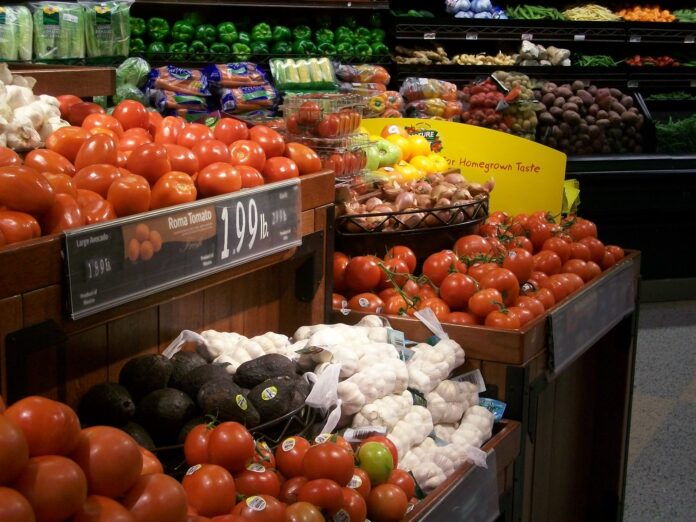Key Points – Groceries on Credit
- Growing number of Americans now using credit for groceries
- Buy now, pay later late payments surge to 41%
- Inflation, high interest rates, and tariff fears squeeze budgets
- 25% of BNPL users buy groceries this way, up from last year
- 60% of BNPL borrowers manage multiple loans at once
- DoorDash and Coachella purchases spark national debate
- Experts warn financial conditions will likely worsen
Americans Now Putting Groceries on Credit as Budgets Crack
A growing number of Americans are putting their groceries on credit. According to LendingTree data released Friday, buy now, pay later (BNPL) loans are becoming a lifeline for many households as inflation and economic uncertainty grip the nation.
The findings show that around half of U.S. consumers have used BNPL services. Of those, 25% said they are using them to buy food—an alarming jump from 14% in 2024.
The report highlights deepening cracks in consumer finances. Persistent inflation, stubbornly high interest rates, and tariff fears are forcing Americans to take desperate steps just to keep their refrigerators full.
Late Payments on the Rise
It’s not just the rise in usage that’s concerning. According to LendingTree, 41% of BNPL users made at least one late payment in the past year. That’s up from 34% the year before.
Most late payments were only a few days overdue. Still, the trend points to growing strain on personal budgets. LendingTree’s chief analyst Matt Schulz warned that the situation could get worse before it gets better.
“There’s still a lot of uncertainty,” Schulz said. “Inflation remains a problem. Interest rates are high. People are scrambling to extend their budgets however they can.”
BNPL Becomes a Double-Edged Sword
While BNPL loans offer interest-free installments, they come with high late fees. Missing a payment can trigger penalties that quickly snowball.
Moreover, 60% of BNPL users reported juggling multiple loans at once. Nearly one-fourth said they were managing three or more at the same time.
“It’s easy to get overwhelmed,” Schulz warned. He advised consumers to tread carefully and use BNPL services only as a temporary bridge between paychecks—not a long-term solution.
Financing Everything From Groceries to Concert Tickets
The trend isn’t just confined to groceries. Americans are using BNPL loans for everything from concert tickets to fast food.
Billboard recently reported that about 60% of Coachella attendees financed their tickets through BNPL services. Meanwhile, DoorDash announced that it will now accept Klarna financing for food deliveries.
The news sparked widespread mockery. Social media exploded with jokes about Americans financing cheeseburgers and burritos. But beneath the humor lies a grim economic reality.
Job Market No Longer Cushioning Inflation
Over the past few years, a strong job market helped consumers weather inflation. Rising wages kept household budgets afloat even as prices climbed.
However, cracks are beginning to show. Earlier this year, Walmart and Delta Airlines issued warnings about slowing demand. The economic cushion that protected many Americans appears to be deflating.
Without that buffer, more consumers are turning to debt—not for luxuries, but for basic necessities.
The Hidden Danger of Multiple Loans
The ability to split payments may seem like a lifesaver. Yet when consumers stack multiple loans, the risks multiply fast.
Late payments often trigger harsh fees. Borrowers juggling several BNPL obligations can find themselves overwhelmed before they know it.
Schulz emphasized that while BNPL can be a helpful tool in a pinch, it’s not a solution for chronic cash shortfalls. “People need to be very cautious,” he said.
Economists Fear Things Will Get Worse
Although Schulz hesitated to call it a recession signal, he painted a bleak near-term outlook. “I do think it’s going to get worse, at least in the short term,” he said.
Inflation remains sticky. Interest rates are unlikely to drop anytime soon. New tariffs could push prices even higher. All of these forces are squeezing household budgets from every angle.
If conditions continue to deteriorate, BNPL late payments are likely to spike even higher.
Americans Forced to Finance Everyday Life
The rise in groceries on credit is a flashing red warning light. When everyday necessities like food must be financed, the economy is on shaky ground.
Consumers once leaned on BNPL for extras—fancy electronics, vacations, or luxury goods. Today, they’re using it to buy milk, eggs, and bread.
It’s a drastic shift that reflects mounting desperation among working families.
Bottom Line: Groceries on Credit Could Be Just the Beginning
The latest LendingTree findings suggest a grim trend taking hold. As prices rise and wages fail to keep pace, Americans are leaning harder on buy now, pay later loans.
Groceries on credit might just be the beginning. Without relief on inflation, interest rates, or tariffs, consumers could soon find themselves trapped in a dangerous debt spiral.
Financial experts urge caution. But for millions of Americans trying to stretch their budgets, BNPL loans may feel like the only option left.




